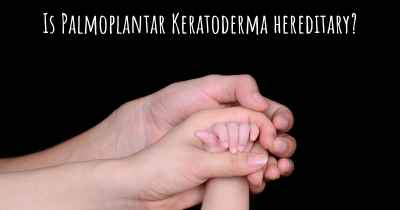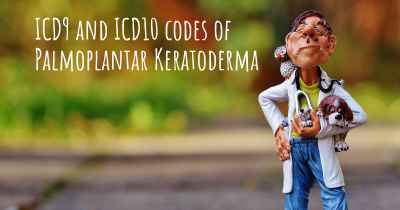What is the history of Palmoplantar Keratoderma?
When was Palmoplantar Keratoderma discovered? What is the story of this discovery? Was it coincidence or not?

Palmoplantar keratoderma (PPK) is a rare genetic disorder characterized by the thickening of the skin on the palms of the hands and soles of the feet. This condition can be inherited in an autosomal dominant, autosomal recessive, or X-linked manner, depending on the specific genetic mutation involved. PPK can manifest in various forms, with different clinical features and severity levels.
The history of palmoplantar keratoderma dates back to the early 19th century when the condition was first described. However, it wasn't until the mid-20th century that significant advancements were made in understanding its genetic basis and classification.
In 1940, the renowned dermatologist Dr. Felix Lewandowsky described a case of PPK in a family, highlighting the hereditary nature of the condition. This marked an important milestone in recognizing PPK as a distinct disorder.
In the 1950s, further research led to the identification of different subtypes of PPK based on their clinical characteristics. These subtypes included diffuse PPK, focal PPK, punctate PPK, and others. This classification system helped in understanding the heterogeneity of the disorder.
In the 1980s, with the advent of molecular genetics, researchers began to unravel the genetic basis of PPK. They discovered specific gene mutations associated with different forms of PPK, shedding light on the underlying mechanisms of the condition.
In 1996, a landmark study identified the first gene mutation associated with PPK. This mutation was found in the keratin 9 gene (KRT9) and was linked to the focal palmoplantar keratoderma subtype. This discovery provided crucial insights into the role of keratin proteins in maintaining the integrity of the skin.
In the following years, numerous other gene mutations were identified in association with different forms of PPK. These mutations affected various keratin genes, including KRT1, KRT16, KRT17, and others. The identification of these genetic abnormalities deepened our understanding of the pathogenesis of PPK.
Advancements in genetic testing have allowed for more accurate diagnosis and classification of PPK subtypes. This has enabled clinicians to provide better genetic counseling and management strategies for affected individuals and their families.
Despite significant progress in understanding the genetic basis of PPK, there is still much to learn about the condition. Ongoing research aims to uncover additional causative genes and further elucidate the complex mechanisms underlying PPK.
Today, the management of PPK focuses on symptomatic relief and preventing complications. Treatment options include regular moisturization, keratolytic agents, topical retinoids, and in severe cases, surgical interventions. Genetic counseling and support groups also play a crucial role in helping individuals and families affected by PPK cope with the challenges associated with the condition.
In conclusion, the history of palmoplantar keratoderma spans several centuries, with significant milestones achieved in the past few decades. From the initial recognition of its hereditary nature to the identification of specific gene mutations, our understanding of PPK has greatly evolved. Ongoing research continues to shed light on this rare genetic disorder, paving the way for improved diagnosis, management, and potential future therapies.








